
Birds Around Las Vegas, Wildlife Around Las Vegas
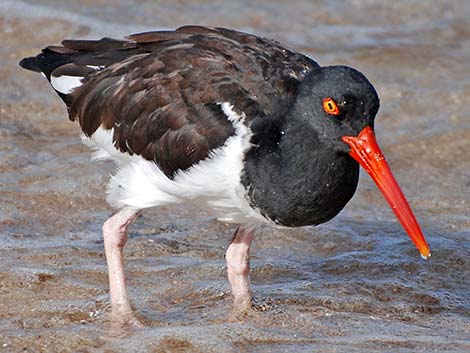 |
General Description: American Oystercatchers (Haematopus palliatus) are large, plump, black-over-white shorebirds with a very large red bill, pinkish legs, red eye rings, and yellow eyes. Juveniles are browner, including the bill. In flight, shows a bold white stripe across the black wing; the tail is white with a bold black terminal band. True to the name, the large bill is used to feed on oysters, but they also clams and other bivalves, worms, and other tasty items found in the sand and mud. Taxonomy: Charadriiformes, Haematopodidae. Two subspecies are recognized in North America: H. p. palliatus along the Atlantic coast, and H. p. frazari along the Pacific coast of Mexico. H. p. galapagensis in the isolated Galapagos Island population. |
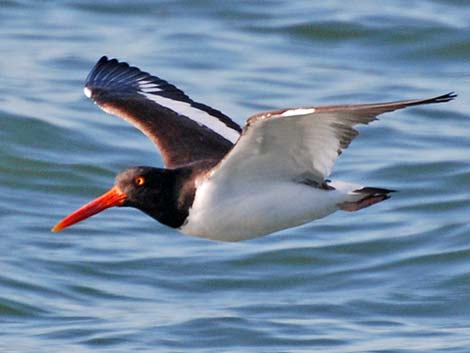 |
Favored Habitat: Coastlines; sandy, rocky, and muddy. Where to Find: Don't look for American Oystercatchers around Las Vegas. Rather, look for them along the Atlantic coast of North and South America and along the Pacific coast of Mexico and South America. Individuals occasionally drift north along the coast of southern California. Comments: Not endangered, but considered a sensitive species in several Atlantic Coast states where development and recreation threaten nesting and foraging habitat. |
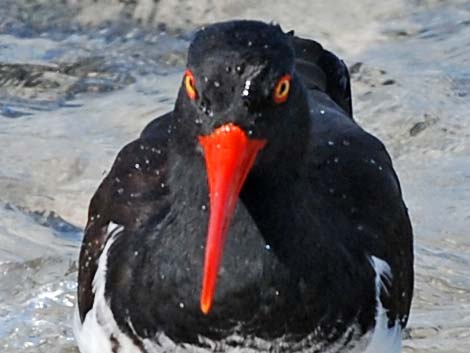 |
If you were a tasty oyster or maybe a big sand worm, this might be the last face you ever see! |
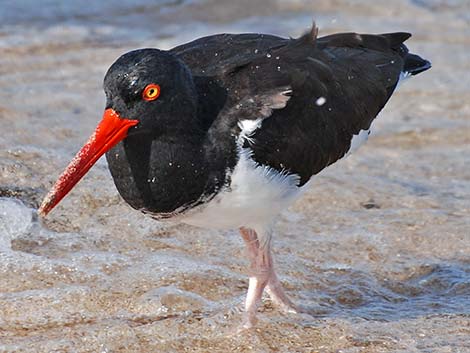 |
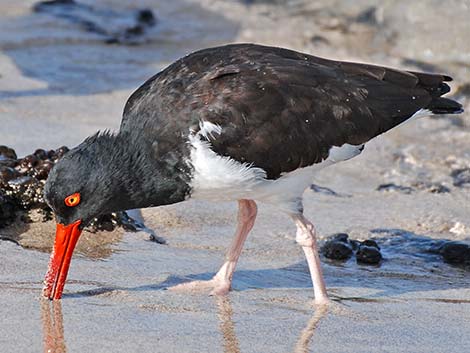 |
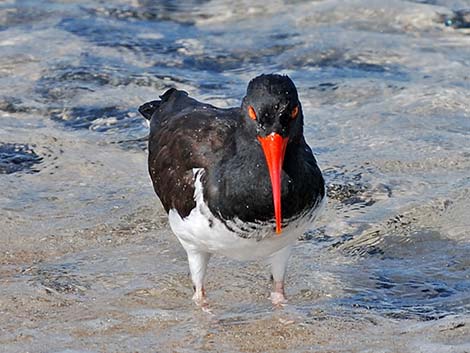 |
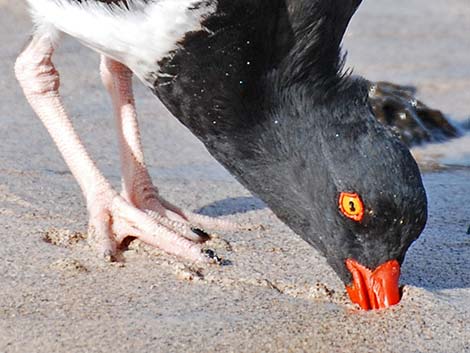 |
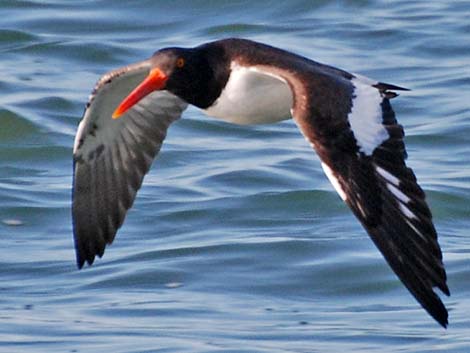 |
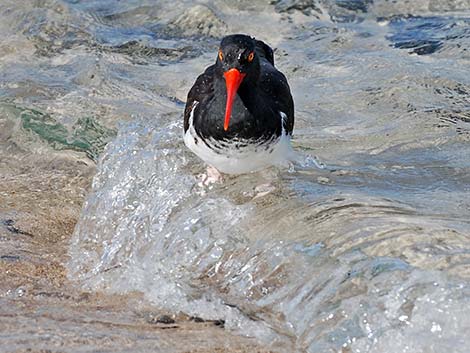 |
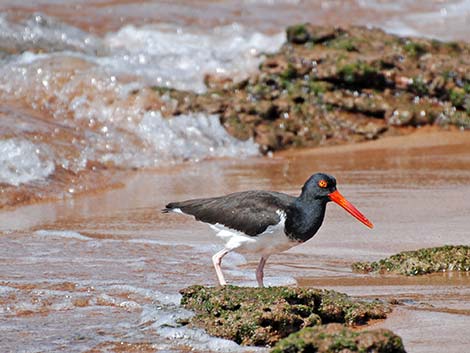 |
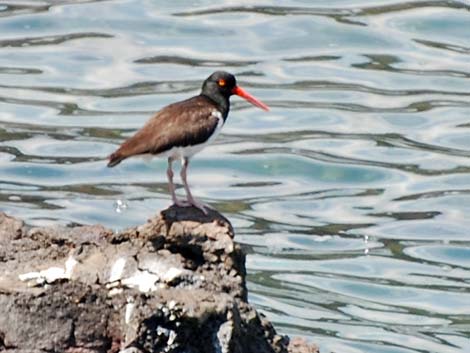 |
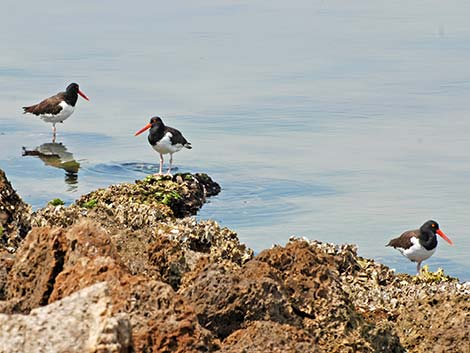 American Oystercatchers; Dunedin, Florida |
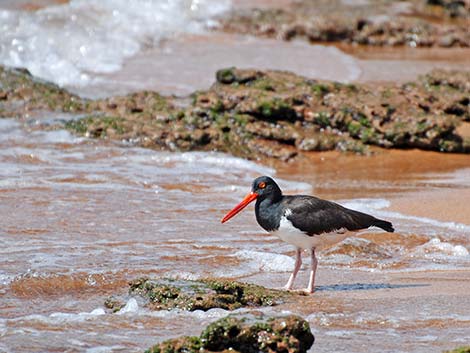 American Oystercatcher |
| Shorebirds | Birds Around Las Vegas | Wildlife Around Las Vegas | Glossary | Copyright, Conditions, Disclaimer | Home |